Abstract
Pigeons were trained to discriminate between the presence and absence of apparent movement in visual displays. Generalization gradients obtained on the dimension of speed indicated a broad range of movement detection. Extremely accurate discrimination performance on displays varying in direction of movement suggested formation of a “movement concept”.
Full text
PDF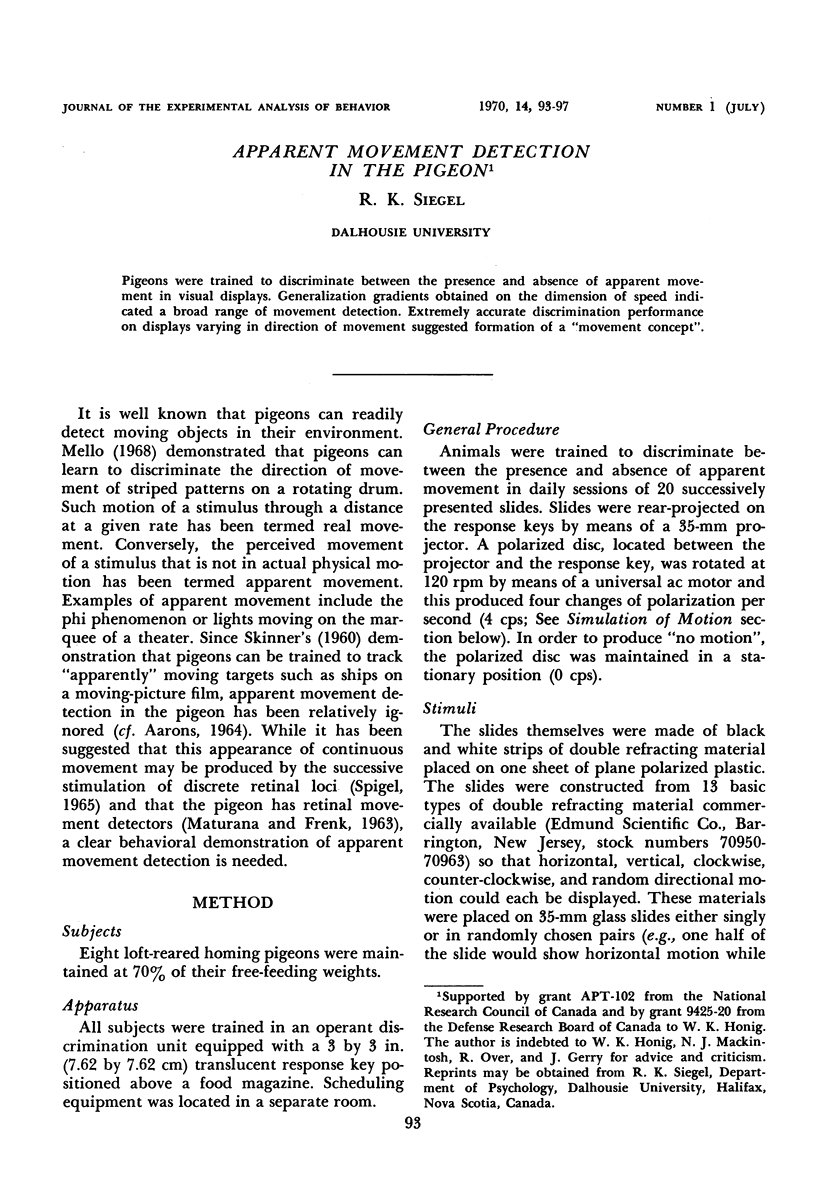
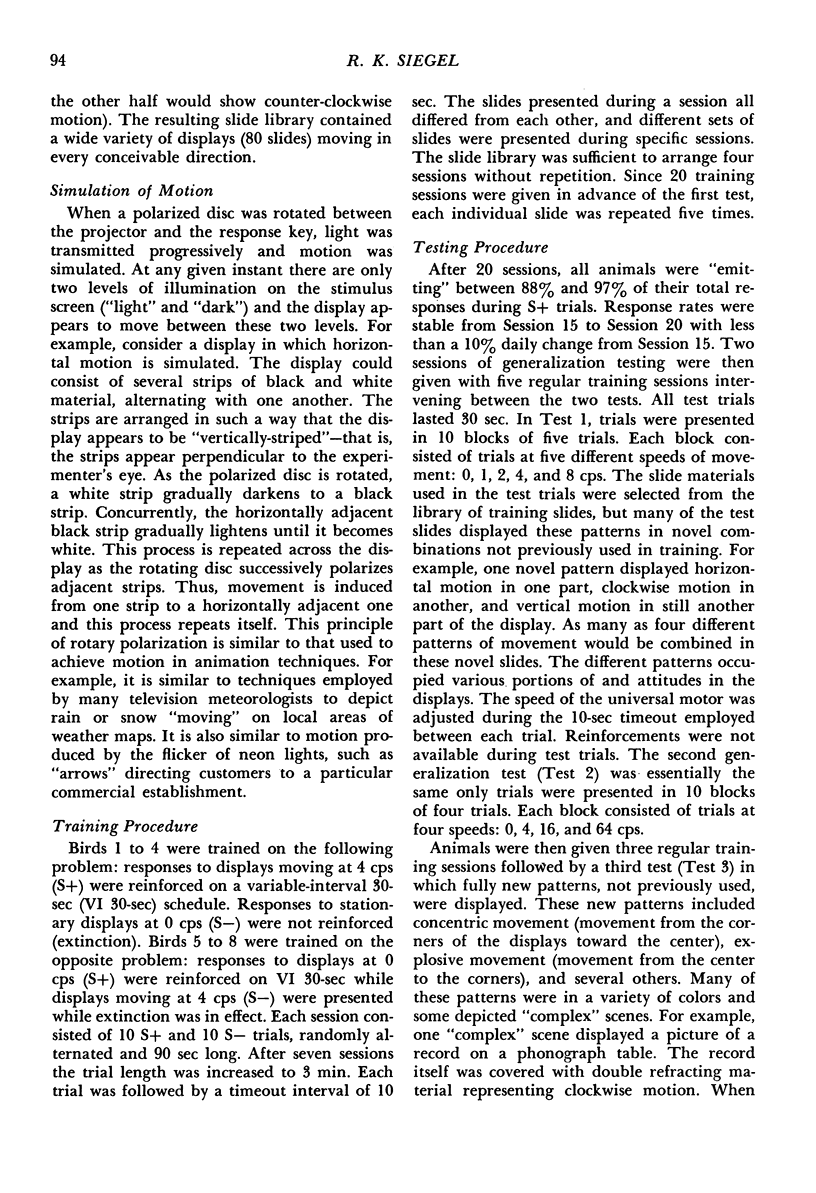
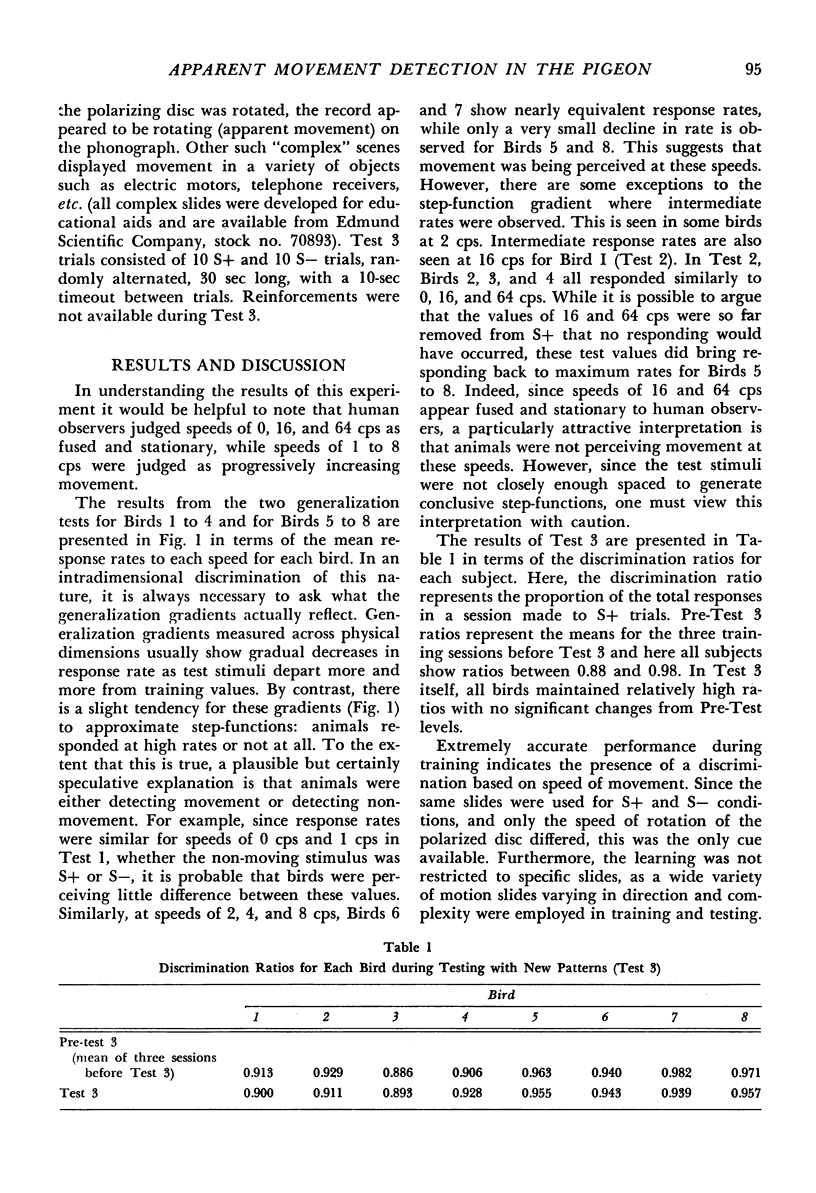
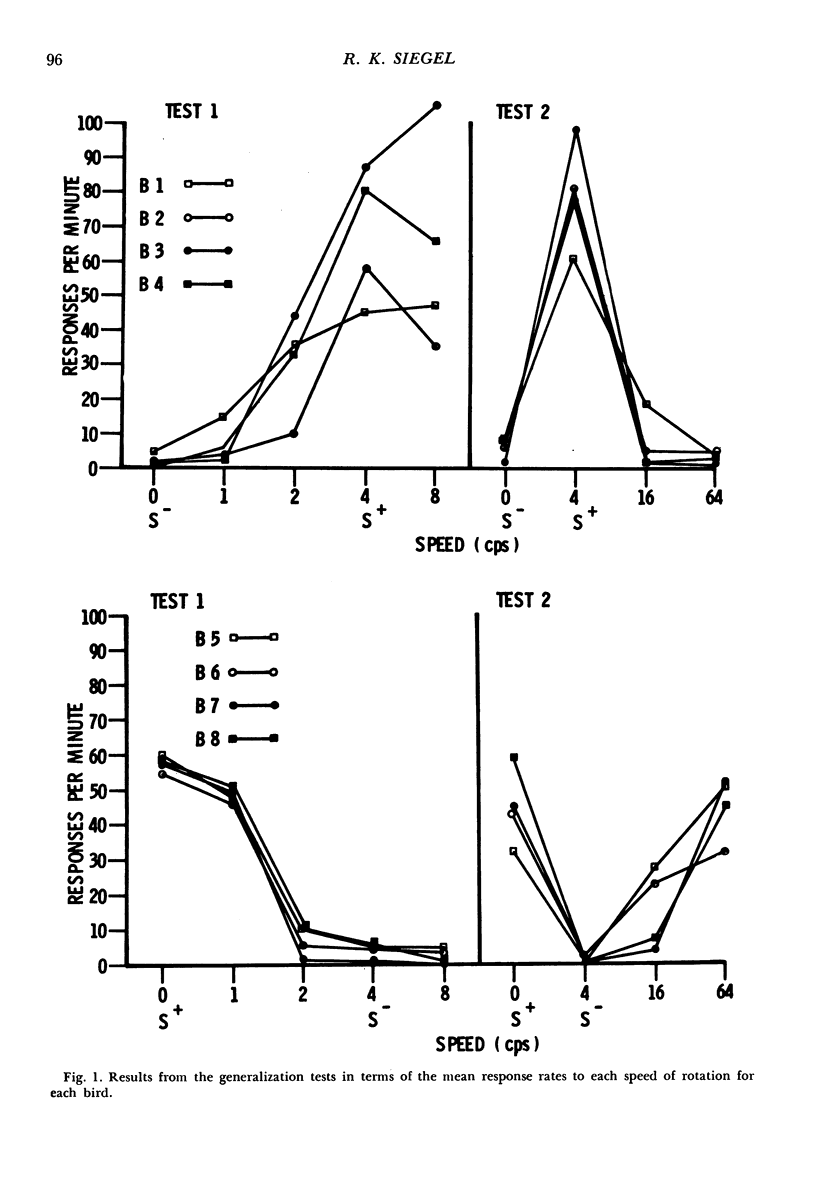
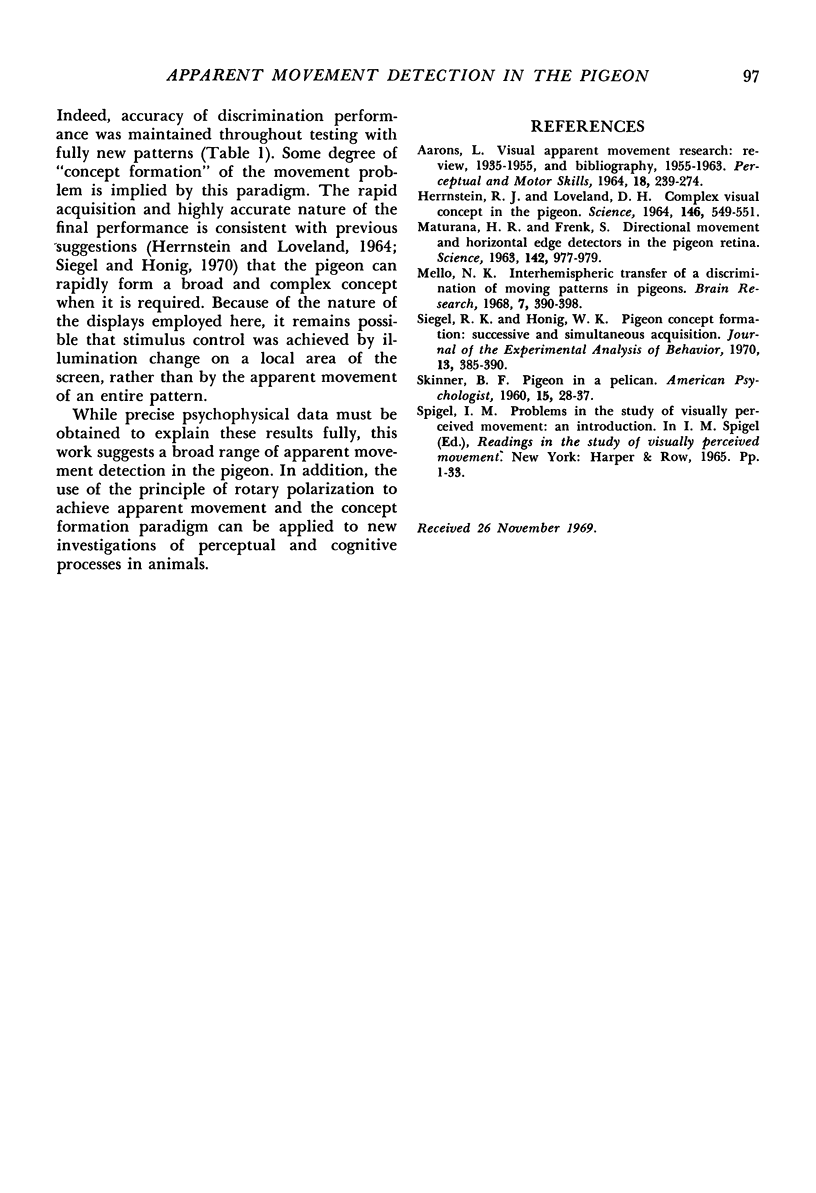
Selected References
These references are in PubMed. This may not be the complete list of references from this article.
- AARONS L. VISUAL APPARENT MOVEMENT RESEARCH: REVIEW, 1935-1955, AND BIBLIOGRAPHY, 1955-1963. Percept Mot Skills. 1964 Feb;18:239–274. doi: 10.2466/pms.1964.18.1.239. [DOI] [PubMed] [Google Scholar]
- HERRNSTEIN R. J., LOVELAND D. H. COMPLEX VISUAL CONCEPT IN THE PIGEON. Science. 1964 Oct 23;146(3643):549–551. doi: 10.1126/science.146.3643.549. [DOI] [PubMed] [Google Scholar]
- MATURANA H. R., FRENK S. DIRECTIONAL MOVEMENT AND HORIZONTAL EDGE DETECTORS IN THE PIGEON RETINA. Science. 1963 Nov 15;142(3594):977–979. doi: 10.1126/science.142.3594.977. [DOI] [PubMed] [Google Scholar]
- Mello N. K. Interhemispheric transfer of a discrimination of moving patterns in pigeon. Brain Res. 1968 Mar;7(3):390–398. doi: 10.1016/0006-8993(68)90005-x. [DOI] [PubMed] [Google Scholar]
- Siegel R. K., Honig W. K. Pigeon concept formation: successive and simultaneous acquisition. J Exp Anal Behav. 1970 May;13(3):385–390. doi: 10.1901/jeab.1970.13-385. [DOI] [PMC free article] [PubMed] [Google Scholar]


